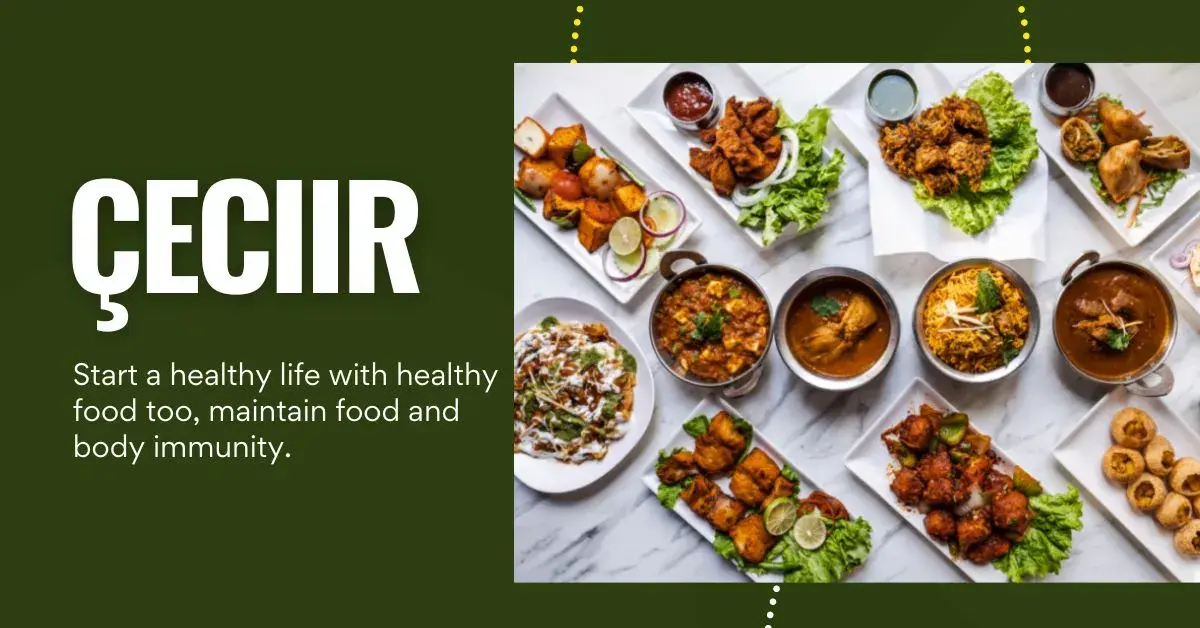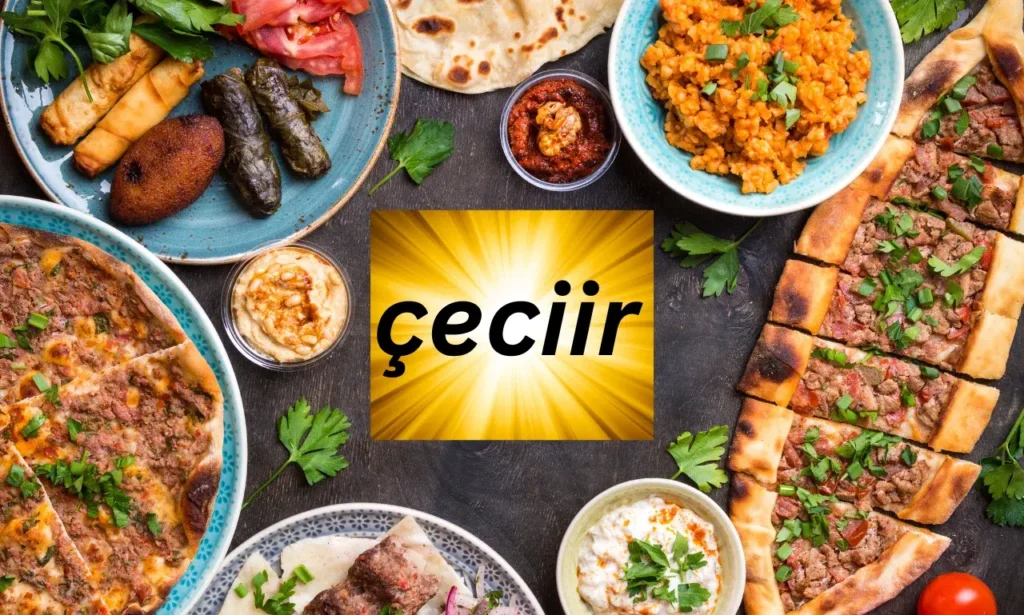çeciir: Unveiling the Rich Tapestry of Turkish Culinary Heritage

Turkish cuisine is renowned for its rich flavors, diverse ingredients, and deep cultural roots. Among the many culinary treasures of Turkey, çeciir stands out as a dish that embodies the essence of Turkish tradition. This article delves into the world of führer, exploring its historical significance, preparation techniques, nutritional benefits, and cultural impact. Whether you’re a food enthusiast or a curious traveler, this comprehensive guide will take you on a journey through the heart of Turkish cuisine.
The Historical Roots of çeciir
The Origins of çeciir
çeciir, a dish made primarily from chickpeas, has ancient origins that date back to the Ottoman Empire. The dish was often enjoyed by the Sultan’s court and was a staple in royal feasts. Chickpeas, the central ingredient of çeciir, have been cultivated in Turkey for over 7,000 years, making them one of the oldest domesticated crops in the region.
çeciir in Ottoman History
During the Ottoman era, çeciir was not only a culinary delight but also a symbol of prosperity and abundance. It was commonly prepared during significant celebrations and religious festivals, such as Ramadan. The dish’s ability to be stored for long periods made it a favorite among soldiers and travelers, who relied on it as a nutritious and filling meal.
çeciir in Turkish Folklore
In Turkish folklore, çeciir is often associated with themes of hospitality and generosity. It is said that no guest should leave a Turkish home without being offered a bowl of çeciir, symbolizing the host’s goodwill and the guest’s importance. This tradition continues in many Turkish households today, reflecting the enduring cultural significance of the dish.
Ingredients and Preparation of çeciir
The Essential Ingredients
The beauty of çeciir lies in its simplicity, yet the flavors it produces are remarkably complex. The key ingredients include:
- Chickpeas: The star ingredient, chickpeas are soaked overnight to ensure they are tender and flavorful.
- Olive Oil: A staple in Turkish cooking, olive oil adds richness and a smooth texture to the dish.
- Garlic: Adds a pungent and aromatic element to the dish.
- Cumin: A traditional spice that enhances the earthy flavor of chickpeas.
- Paprika: Provides a subtle heat and a deep red color.
- Lemon Juice: Adds a refreshing acidity that balances the richness of the olive oil.
Step-by-Step Preparation Guide
- Soaking the Chickpeas: Begin by soaking the chickpeas overnight in a large bowl of water. This step is crucial as it softens the chickpeas and reduces cooking time.
- Cooking the Chickpeas: Drain the soaked chickpeas and transfer them to a pot of fresh water. Bring the water to a boil, then reduce the heat and simmer the chickpeas until tender. This process usually takes about 1-2 hours.
- Sautéing the Garlic and Spices: In a separate pan, heat the olive oil over medium heat. Add the minced garlic and sauté until fragrant. Stir in the cumin and paprika, allowing the spices to bloom in the hot oil.
- Combining the Ingredients: Once the chickpeas are cooked, drain them and ad them to the pan with the garlic and spices. Stir to coat the chickpeas evenly with the spice mixture.
- Finishing Touches: Squeeze fresh lemon juice over the chickpeas and season with salt to taste. Serve hot, garnished with fresh herbs if desired.
Regional Variations
While the basic recipe for çeciir remains consistent, various regions in Turkey have their own unique takes on the dish. In some areas, dried mint or sumac is added for a more aromatic flavor, while others might incorporate tomatoes or onions for added depth. These regional variations reflect the diverse culinary traditions across Turkey, each contributing to the rich tapestry of Turkish cuisine.
Culinary Techniques Specific to çeciir
Traditional Cooking Methods
çeciir is traditionally cooked in a clay pot over an open flame. a method that imparts a smoky flavor to the dish. The clay pot retains heat well. ensuring that the chickpeas cook evenly and develop a deep, rich flavor. This method is still preferred in rural areas where traditional cooking practices are preserved.
Modern Adaptations
In urban settings, where modern kitchen appliances are more common. çeciir is often prepared in a slow cooker or pressure cooker. These methods significantly reduce the cooking time while preserving the dish’s authentic flavor. Some chefs have also experimented with roasting the chickpeas before combining them with the spices, creating a crispy, textured version of çeciir that appeals to contemporary palates.
Common Mistakes to Avoid
- Undercooking the Chickpeas: One of the most common mistakes is undercooking the chickpeas, resulting in a grainy texture. Ensure that the chickpeas are fully tender before combining them with the spices.
- Overloading the Spices: While spices are crucial to the flavor of çeciir, using too much can overpower the dish. Balance is key to achieving the right flavor profile.
- Skipping the Soaking Step: Failing to soak the chickpeas can lead to uneven cooking and a tougher texture. Always soak the chickpeas overnight for the best results.
The Nutritional Benefits of çeciir
A Nutritional Powerhouse
çeciir is not only delicious but also highly nutritious. A single serving of çeciir is packed with protein. dietary fiber. and essential vitamins and minerals. This makes it an excellent choice for vegetarians and those looking to maintain a healthy diet.
Health Benefits of Chickpeas
- High in Protein: Chickpeas are a rich source of plant-based protein, making çeciir a filling and satisfying dish. Protein is essential for muscle repair and growth, making this dish particularly beneficial for active individuals.
- Rich in Fiber: The dietary fiber in chickpeas aids in digestion and helps maintain a healthy gut. Fiber also promotes satiety, helping to manage weight.
- Low in Fat: Despite its rich taste, çeciir is low in fat, especially when prepared with olive oil, which is a source of healthy monounsaturated fats.
Comparative Nutritional Analysis
Compared to other chickpea-based dishes like hummus or falafel, çeciir is lower in calories and fat due to its simpler preparation method. It also contains fewer added ingredients, making it a more natural and wholesome option.
Cultural Significance of çeciir
çeciir in Social Gatherings
In Turkey, food is a central part of social life, and çeciir is often at the heart of these gatherings. Whether it’s a family dinner or a festive celebration, çeciir is a dish that brings people together. Its preparation is often a communal activity, with family members working together to soak, cook, and season the chickpeas.
çeciir as a Symbol of Hospitality
The tradition of offering çeciir to guests is deeply ingraine in Turkish culture. This gesture symbolizes warmth, generosity, and the importance of making guests feel welcome. In many Turkish homes, a bowl of çeciir is serve with brea and olives as a starter, setting the tone for a hearty and welcoming meal.
Stories and Anecdotes
Many Turkish families have stories associated with çeciir, often passed down through generations. One such tale recounts how çeciir saved a village from famine during a harsh winter, with the villagers coming together to share their chickpea stores and create a communal meal. This story highlights the dish’s role in fostering community spirit and resilience.

Modern Interpretations and Global Influence
Contemporary Turkish Cuisine
As Turkish cuisine evolves, so too does çeciir. Modern chefs have begun to experiment with the dish, incorporating new ingredients and techniques while still honoring its traditional roots. For example, some chefs have introduced smoked paprika or truffle oil to give the dish a more contemporary flavor profile.
Fusion Recipes
çeciir has also found its way into fusion cuisine, where it is combined with ingredients from other culinary traditions. For instance, a çeciir salad might include quinoa and avocado, creating a dish that is both nutritious and globally inspired. These fusion recipes are particularly popular in cosmopolitan cities where diverse culinary influences converge.
çeciir on the Global Stage
Turkish restaurants around the world have begun to introduce çeciir to international audiences, often featuring it as a signature dish. Its simplicity, flavor, and versatility make it an attractive option for chefs looking to showcase authentic Turkish cuisine. As a result, çeciir is gaining popularity outside of Turkey, with food enthusiasts and home cooks alike experimenting with the dish.
Serving Suggestions and Pairings
Traditional Serving Methods
çeciir is traditionally served hot, often accompanied by Turkish flatbread or pide. The bread is used to scoop up the chickpeas, allowing diners to savor every bit of the flavorful sauce. A side of yogurt or tzatziki is also common, providing a cool and creamy contrast to the warm and spicy chickpeas.
Complementary Dishes
To create a full Turkish meal, çeciir can be paired with a variety of side dishes. Some popular options include:
- Shepherd’s Salad (Çoban Salatası): A refreshing salad made with tomatoes, cucumbers, onions, and green peppers, dressed with olive oil and lemon juice.
- Bulgur Pilaf: A nutty and hearty grain dish that complements the rich flavors of çeciir.
- Grilled Eggplant: Smoky and tender, grilled egg






